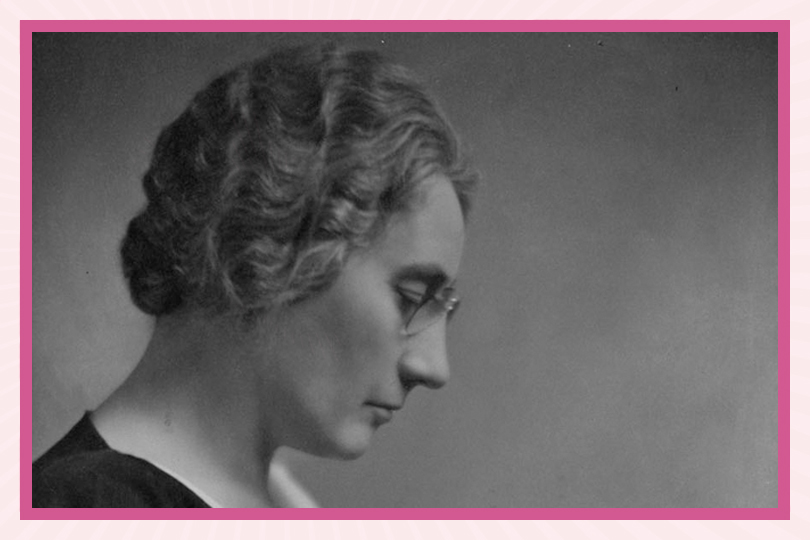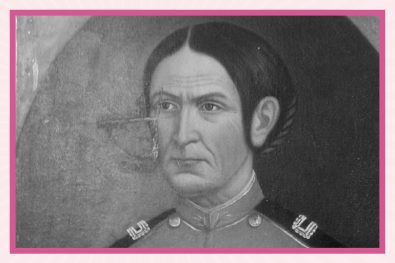By Sienna Vittoria Asselin
It was December 6, 1921, in South-East Grey County, Ontario. It was election time, and the air was abuzz with excitement. After the citizens had cast their votes, they waited in anticipation: who would represent them in Parliament?
It was a historic victory: the winner was a woman—the first time a woman had been elected as an MP in Canada.
Who was this female political pioneer, who, along with 235 men, took her seat in the House of Commons? Read on for a look at the fascinating life and the complicated legacy of Agnes Macphail, a woman who paved the way for women to hold political office in the coming generations.
The Beginning
Agnes Macphail was born in 1890 to a farming family of Scottish descent in Grey County in southwestern Ontario. In her early years, they lived in a dilapidated farmhouse and struggled to make ends meet. By the time she was a teenager, her family had achieved some financial stability and had purchased a better farm, but her upbringing instilled in her a passion for helping farmers and workers which would become apparent later in her career.
She spent her childhood avoiding her domestic chores, preferring to help her father with the livestock. She also excelled in school, and dreamed of a life beyond the farm. After convincing her parents to allow her to attend high school (a big deal at the time, as high schools were in the cities and therefore a financial burden to rural families), she went on to become a teacher. After completing Normal School (aka teacher’s college) in Stratford, she began teaching in various one-room schoolhouses in Ontario and Alberta.
A Career of Firsts
She worked as an educator from about 1910-1920, but her strong and outspoken opinions quickly drew her into the world of politics. While teaching at a school near Sharon, Ontario, she became involved in agricultural political organizations like the United Farmers of Ontario.
It was a pivotal time in Canadian politics. Some women (basically, white women) had recently won the right to vote and run as candidates in federal elections. It was the time that politically active women like Macphail had been waiting for.
In 1921, Macphail ran in the federal election for the South-East Grey County as a member of the Progressive Party, which the United Farmers of Ontario was affiliated with. It wasn’t an easy campaign trail and she constantly had to defend herself in front of harsh criticism and hostility. As a woman, she faced endless criticism. And to make matters worse, she was an unmarried woman in her thirties, and so she was constantly questioned about life as a “spinster and treated as a “curiosity” or a “freak.”
“Don’t you wish you were a man?” one heckler reportedly shouted at her once. “Yes,” she responded. “Don’t you?” The crowd cheered at her wit.
Regarding that incident, she later wrote, “My answer is: No. I’d rather be a woman—if the world would treat me as it treats a man.” She always insisted that women and men were equals; she did not want to degrade men in her quest for women’s rights, she simply wanted to level the playing field.
After a tough campaign, in an historic victory, she won the 1921 election, becoming the first woman to join the House of Commons. She would be the only woman in a sea of men for the next 15 years.
“I won that election in spite of being a woman,” she later recalled. In reflecting on her career for Macleans, she wrote: “There were many things that made me realize that this is a man’s world, but I managed to survive. I survived partly because I have a temper like a tinderbox soaked in coal oil and a tongue that men have learned to respect.”
Over the next two decades, Macphail used her position as an MP to advocate for various social and political issues that she was passionate about: the representation of farmers, the rights of minors, prison reform, the interests of the working class, and the rights of women. She had many admirers, but also some critics who scoffed that her judgment was impaired by her “sweet nature” and that her progressive causes were mere “womanly sympathy.”
In 1924, Macphail joined a few colleagues leaving the Progressive Party to form the Ginger Group. In 1932, they founded the Co-operative Commonwealth Federation (CCF), a forerunner to the NDP party, which sought to provide relief to those affected by the Great Depression and called for the creation of a welfare state.
She was also a determined pacifist and a member of the Women’s International League for Peace and Freedom. Macphail worked against the glorification of war and empire, and discouraged military spending and cadet training. In 1929, she was the first woman to join a Canadian delegation to the League of Nations, serving on the disarmament committee. Her criticism of militarism and imperialism even got her accused of treason. She maintained her pacifist stance until 1939, when she reluctantly voted for Canada’s participation in WWII, deeming “no opposition to Hitler” even “more terrible” than war itself.
The Later Years and Legacy
After losing her seat as an MP in 1940 (having served for just under 20 years), she transitioned into provincial politics. She set another record by being one of the first two women to become members of the Ontario Legislature in 1943. Macphail also became a journalist, writing for The Globe and Mail, and lectured in Canada and the United States. In 1951, she saw the passage of Ontario’s first equal pay legislation, the Female Employees Fair Remuneration Act, a cause that she had been fighting for tirelessly.
But as time went on, she increasingly struggled with ill health and limited income. She never married nor had any children, and in 1954, she died just before Prime Minister Louis St-Laurent was to offer her an appointment to the Senate.
Macphail has since become a Canadian legend and is considered to be a “hero” of history. In 1955, a bust was commissioned and displayed at Parliament Hill to commemorate her career. In 2017, her portrait was printed on the $10 bill to mark Canada’s 150th anniversary.
But although nicknamed “The People’s Champion” for her work as an advocate of farmers, workers, prisoners, and women, there is a darker side to her legacy that is often ignored and must be re-examined.
She was undoubtedly a white woman of her time, and not as enlightened and progressive as we would like to think. For example, Indigenous peoples and their plight completely slipped her radar. And like some other important feminists of the twentieth century, like the Famous Five, Macphail reportedly expressed support for the eugenics movement, accepting the idea that “forced sterilization of mentally challenged individuals was essential” and that there were certain people who should not be allowed to procreate, like “the poor, unemployed, disabled and, more often than not, those who were not white.”
She is quoted as saying to a group at a farm association meeting in 1935: “I just wonder how much longer we’re going to allow subnormal people to produce their kind. It is blasphemy of the worst kind. You farmers—would you want the worst type of cattle to be seed bearers?”
While recognizing the valuable work she did for many women, farmers, and prisoners, this side of her cannot be forgotten. Like others of her time, she must be seen in all her complexity, considering the good, the bad, and at times, the ugly.











